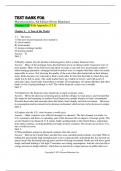Exam (elaborations)
Test Bank For Macroeconomics, 8th Edition by Olivier Blanchard Chapter(1-24) With Appendix(1 2 3)
- Course
- Institution
- Book
Test Bank For Macroeconomics, 8th Edition by Olivier Blanchard Chapter(1-24) With Appendix(1 2 3)
[Show more]



